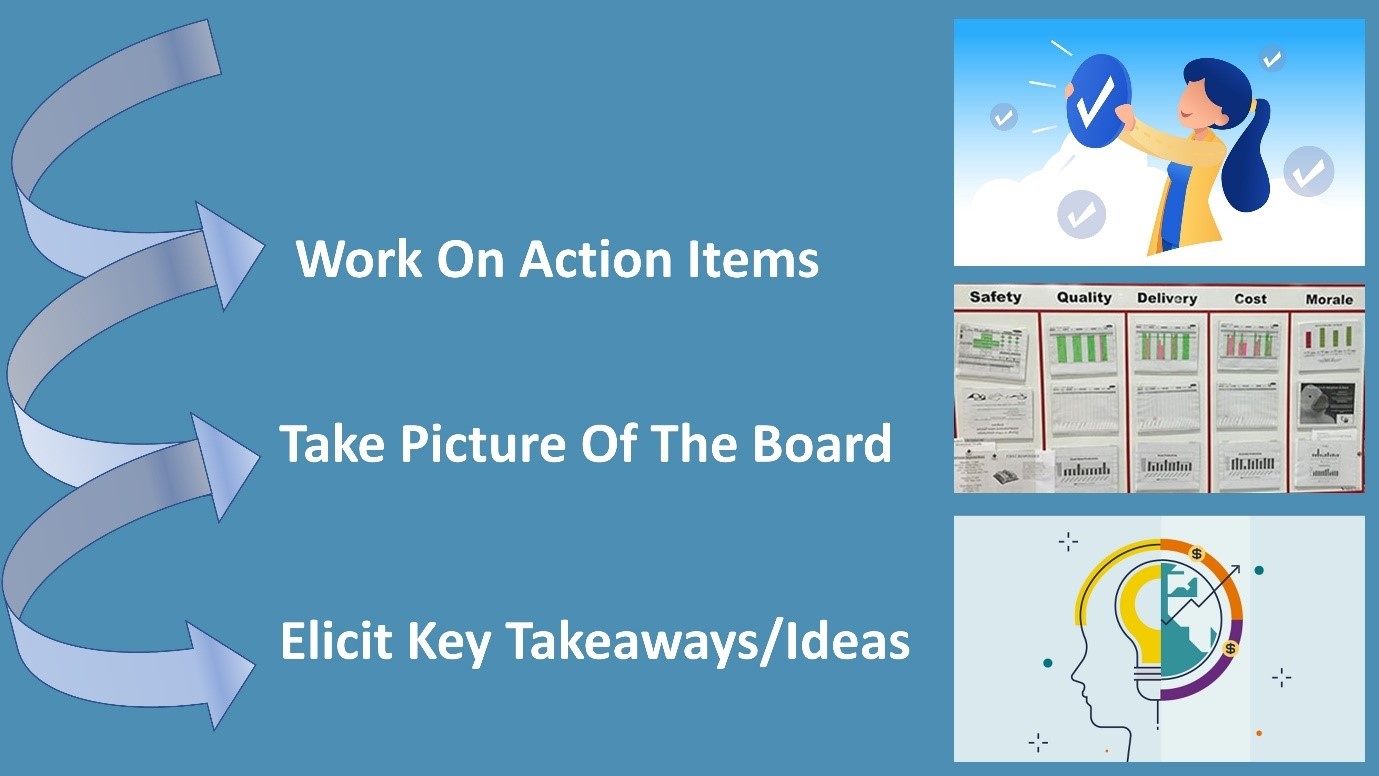A Lean concept – Productive Agenda-Less Meetings
It would be better to have a brief understanding of KANBAN CARDS before starting with the concept of Lean Coffee.
Kanban Cards: Since the article is about lean coffee, I won’t be plunging in detail. KANBAN was developed by Taiichi Ohno (an industrial engineer) at TOYOTA to improve manufacturing Processes to limit the build-up of excess inventory at any point in production.
Kanban is a Japanese term for “Sign” or “Signboard” and Kanban cards is the best visual management which helps in achieving JIT production.
KAN means “Visual”
BAN means “Signal”
Images of Kanban cards
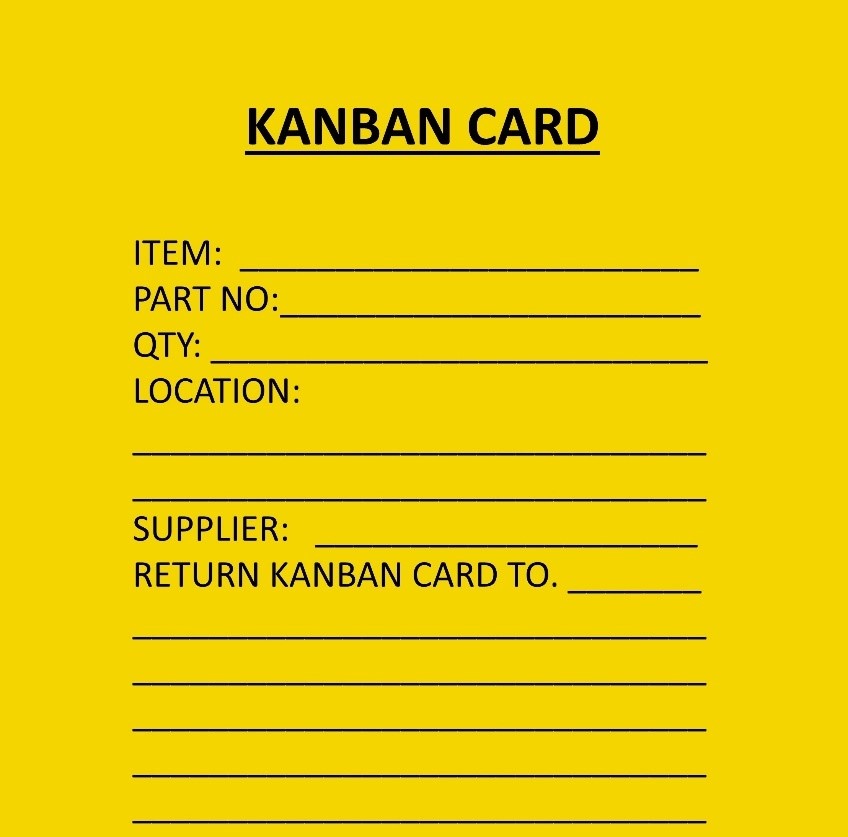
“Change Management works best when it’s a communicative initiative rather than a broadcasting event.”
Holding on to this thought, I would elaborate the concept and purpose of Lean Coffee.
Lean Coffee
The credit of developing this wonderful concept goes to Jim Benson and Jeremey Lightsmith in the year 2009 at Seattle, developed to conduct structured agenda-less meetings, a great tool to democratically building an agenda by participants present which helps in productive conversation and decision making.
Though started in Seattle lean coffee sessions are gaining popularity worldwide, the reason is simple, they are productive, fully involved participation, and result-oriented.
It’s a format that is easy to follow and effective as a learning and collaboration tool through group discussions.
Lean Coffee is a combination of two terms
LEAN – a management technique used to reduce waste and enhance efficiency.
Coffee – implies a casual morning session to boost productivity
But, neither the timing nor the topics are rigid when conducting a lean coffee session and it can be conducted any time of day.
Purpose of a Lean Coffee session
Lean coffee is driven by a simple purpose of conducting a group meeting where people show up with a simple agenda of learning and creating. When looked from lean glass these sessions help remove the eighth MUDA (waste) i.e. waste of unused Human Talent.
The question is HOW?
When meetings are conducted with a rigid pre-planned agenda (I like to call it a PUSH mode, an anti LEAN concept), most participants either are not interested or do not have much to give to the subject. Lack of interest of participants leads to the failure of such meetings.
Whereas lean coffee is a structured time-bound meeting (Based on Pull Mode, a lean concept) with either no agenda or a loose agenda where participant feedback is important and only those topics are discussed which get most of the votes.
“When we invite people to meetings and give them a strong agenda upfront, we are completely robbing ourselves of the wisdom the attendees would bring with” – Jim Benson
In short, lean coffee helps in gaining active resources and knowledge sources. Attendance is not just participation but the complete involvement of participants. Since lean coffee sessions are time-bound, this ensures participants focus on the chosen subject this bringing in greater intensity and effectiveness.
How to Facilitate a Lean Coffee?
If the information above has generated enough interest and you have reached this point, let’s decode how a lean coffee session is conducted?
Requirements
- Sticky Notes
- White Board/ Conference Board (make sure it's big enough that it's visible to participants)
- Markers (prefer over normal pens as they are bright and visible)
- Timing Device (Smart Phone)
- Camera (Smart Phone)
- Venue (lean coffee sessions can also be conducted online, there are many tools available online and due to current pandemic online coffee sessions has gained a lot of popularity)
How it is conducted?
It is Simple
- Set a Personal Kanban
- Ask candidates to write topics they want to discuss on sticky notes.
- Vote and Discuss
Confused, Ok, I will elaborate.
- Setting a personal kanban, this format is used knowingly or unknowingly in every line of work
-

Kanban board should have 5 columns (this is my version, most people prefer 3 or 4 columns)
- To-Do/Discuss
- Doing/Discussing
- Done/Discussed
- Ideas
- Action
This provides a structure for the conversation.
2– If the majority of participants are attending the lean coffee session for the first time, suggest a “Theme” for conversation, this will give a head start to the task.
3 – Ask participants to mention their name on the card and topic/subject they would like to discuss, one topic per card, there is no limit to no. of topics (but limit the number of words to a minimum per card and writing should be clear. Participants are given 5 minutes to write the cards.
4- Display the cards on the “To Do/ To Discuss” column.
5- Spend the first few minutes discussing each topic, describe and define the topics, and club the topics which are similar, stack them one on another. As a facilitator clarify if anything needs clarification.
6- Prioritize the topics (use “dot voting”), each participant is given 2 or 3 votes to determine which topic to discuss first.
7- Participants can use all the votes on one topic or can choose different topics.
8- The topic which gets the maximum votes is discussed first, in case there is a tie facilitator acts as a tie-breaker.
9- Rank topics based on the number of votes they get.
10 – Specify the time to be spent on the initial conversations on each topic. Usually lean coffee meets last for an hour and a half, so depending on that time is allotted, usually, 15 minutes are given in first go.
11- When a topic is selected, it is moved to the second column “Doing/Discussing”
12- When the topic is moved to the second column ask volunteers to start a conversation, start the timer (time is decided mutually)
13- When time is Up, use Roman voting to decide whether the discussion on that particular topic has to continue or not.
What is Roman Voting?
It’s a simple voting technique.
Thumbs Up – Participants want to discuss the topic further.
Thumbs Sidewise – Participants are unsure and ambiguous.
Thumbs Down – Participants want to discuss the next topic.
14 – If maximum votes are up and sideways continue with the same topic or else move to the next topic, in case the team continues to discuss the same topic then time duration for discussion is shorter for example if the time box was set to 15 minutes in the first round then second round would be of 10 minutes.
15 – Keep on repeating the topic till it’s voted out by the team.
16 – When the discussion on the topic is finished move the topic to the third column “done/discussed”, if the discussion is about a new project/product/design, and you get some new ideas write them in the ideas column and if any action has to be taken mention it under action column.
17- Repeat the process with the second topic.
18 – At the end of the session take the picture of the board, elicit key takeaways and action items.
Tools available for Online lean coffee sessions.
1- Retrium
https://www.retrium.com/
2- Lean Coffee Table
https://www.leancoffeetable.com/
I have used these and are good when you need to conduct sessions online or participants cannot be physically present but nothing beats the energy of an offline lean coffee session.
Case Study
This is a case study, of a lean coffee session facilitated by me, to discuss the plan of action and direction for TeachingBharat. An online web-portal for Indian students from Grade 3 to Grade 4, Currently TeachingBharat hosts over 11K video lectures on YouTube from Grade 3 to Grade 12, the syllabus of each class is covered chapter wise for both CBSE and ICSE boards.
Keeping the current situation in mind TeachingBharat’s management needs to figure out how they can grow and become a prominent Edtech company focusing Indian Market.
This session followed the SWOT session conducted earlier.
Participants – This session was attended by core members, Director, CEO, CFO, Product Manager, Marketing Head, Design Head, and Technical Head.
Total Number of Participants – 8 (including facilitator)
Votes Allotted – 3 Votes/Member
Total Number of Votes – 24
Session Time – 1 Hour 30 Minutes
Time Per Topic – 15 Minutes per topic initially followed by 10 Minutes and 5 Minutes.
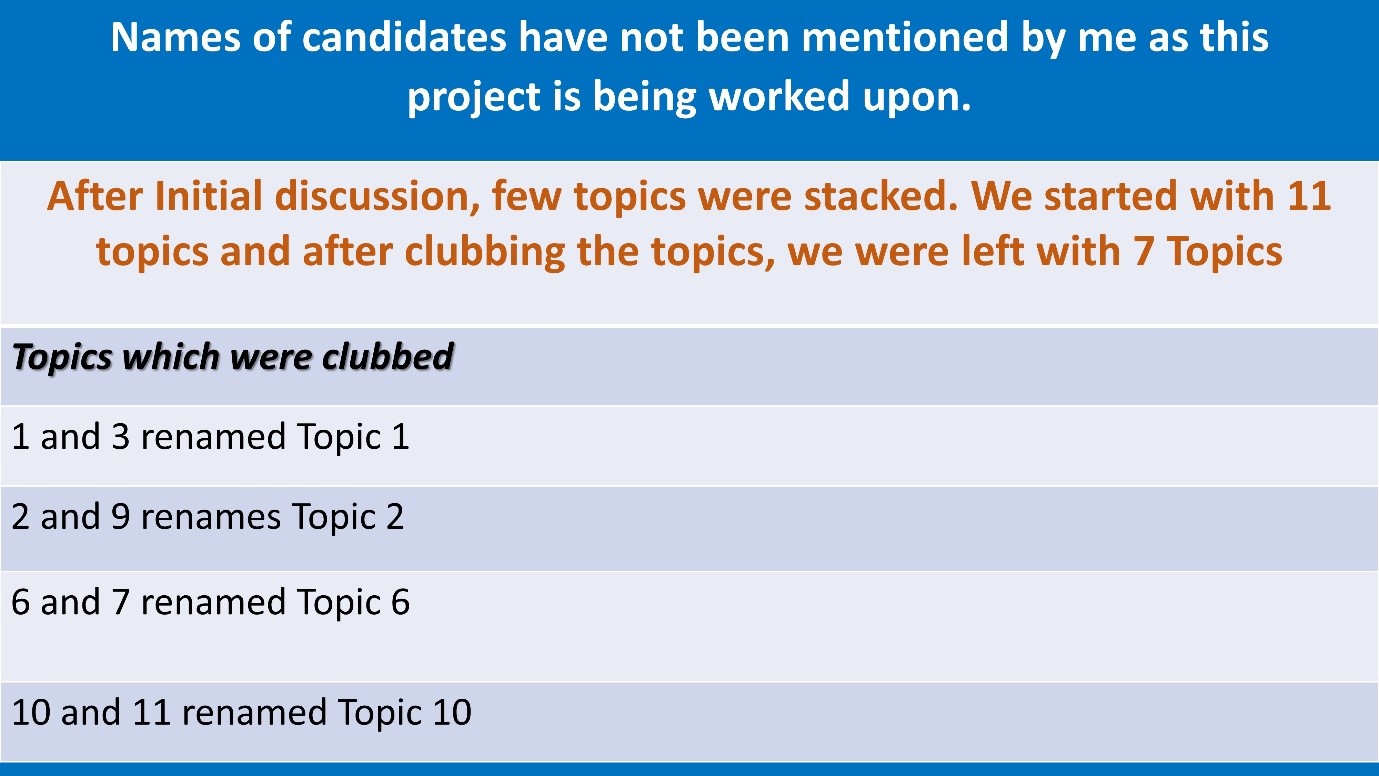
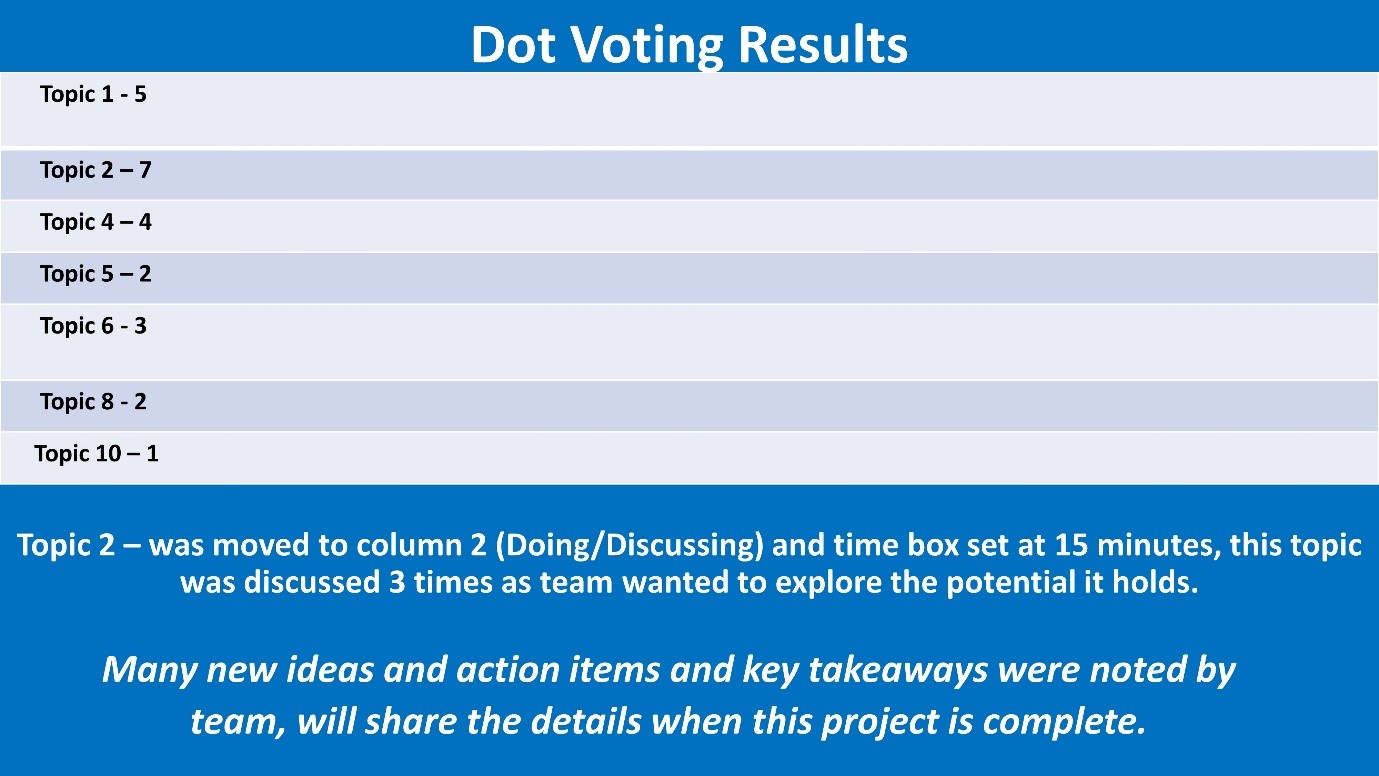
Lean Coffee Summary
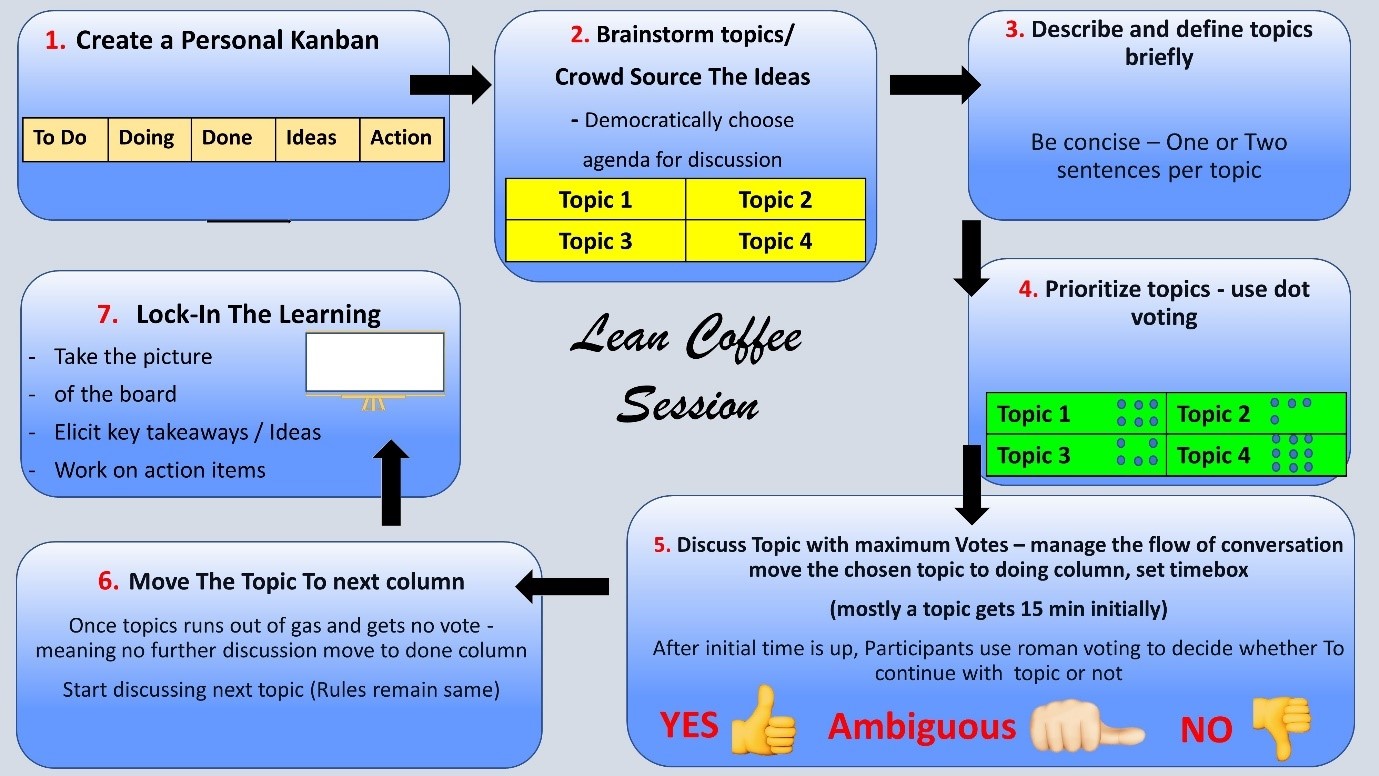
Lean Coffee sessions are a great way to crowd source ideas, it’s an interesting and interactive process as it gives power to participants and not to one person. Discussion flow is natural and you get some great ideas.
